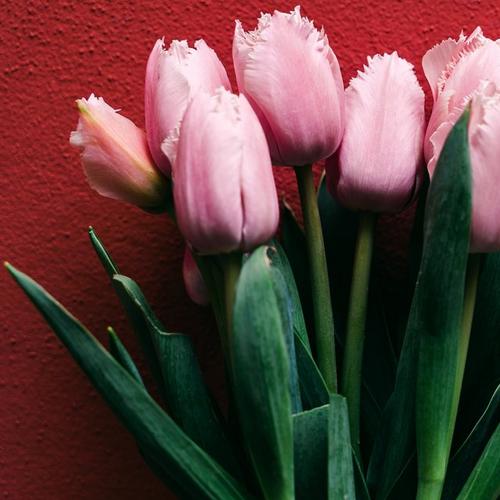Tulips: Your Ultimate Flower Guide
TULIP MEANING AND COLOURS
Tulips have often been represented as meaning “perfect love” but as with many flower types, different colours hold their own meanings. Some of these have changed over the years but these are the most common:
Red Tulips
Yellow Tulips
White Tulips
Purple Tulips
Pink Tulips
Symbolism
These seasonal flowers have long been said to symbolise the start of spring; at least in the modern western world. Classically, they are known to symbolise love but this has not always been the case. For the Victorians, it was seen as a symbol of charity and for the Turks and Persians, it had very deep cultural and religious symbolisms. The Ottoman empire would plant tulip bulbs to remind them of heaven and eternal life. In contrast, the Dutch believe the flower is a representation of how brief life can be. It wasn’t until the 20th or 21st Century that the tulip began to symbolise love.
FACTS ABOUT TULIPS
With tulips being such a popular flower throughout spring there are so many interesting little facts about this stunning bloom. Here are just a few facts about the tulip flower that you may not have known:
- There are over 150 species of tulip with over 3,000 varieties.
- Tulips are part of the lily family.
- Despite being the quintessential Dutch flower, tulips are native to Asia, specifically Persia and Turkey.
- The tulip is the national flower of Turkey.
- During the 'tulip mania' of the 17th century a single tulip bulb cost almost 10 times the average annual salary.
- It is believed that the name Tulip came from the Turkish word for turban (tüllbend) due to its resemblance to the garment but this is possibly just a poor translation more than an actual link
Scientific name: Tulipa Common name: Tulip
Family: Lilaceae Vase Life: 5-10 Days
TYPES OF TULIP
There are many different varieties of tulip to choose from that are each beautiful in their own right. What you pick is entirely up to you and the style you most prefer. Here are some of the most common types:








HOW TO GROW TULIPS
You may be looking to brighten your home this spring and what better way than to grow your own tulips that you can then cut to display around your house. They also make beautiful spring displays for the garden. Since these are such easy flowers to grow, it’s no wonder tulips are popular amongst the green-fingered and non-green-fingered alike.
- Choose a spot which has fertilised well-drained soil that will get plenty of full sun but are sheltered from strong wind. This could be easier if planting in a container as they can be moved if needed.
- Check your bulbs and discard any that show signs of mold or damage.
- Leave plenty of space between each bulb and plant at a depth that is around two or three times the bulb’s height
- Tulips are thirsty plants so make sure to give them plenty of water. Try not to saturate the soil; this is why drainage is so important.
- Once in full bloom, you can cut the plant to make your own bouquets in the home. Be aware that the flower will not likely grow back should you do this.
- Tulips are not perennial plants and so, once they have finished flowering, they will likely need removing and replacing.
Tips for re-growing tulips
You can try to encourage regrowth by lifting the bulbs and drying them out before planting again. However, be aware, this method is not guaranteed.
HOW TO CARE FOR CUT TULIPS
Tulips are such delicate and beautiful flowers, which is why we know you want them to last as long as possible. Here's how to get the most from your cut tulip flowers:
- Remove any excess foliage that may sit below the waterline when your tulips are placed in a vase.
- Whilst holding the tulips under water, cut 2-3cm from the bottom of the stem. Do not let the newly cut ends dry out before transferring to your vase.
- Tulips are thirsty flowers so ensure water levels are topped up daily.
- Re-cut the stems every two days and change the water completely.
- Tulips are phototropic and will continue to grow for 24 hours after cutting. To minimise movement, stand them in a spot lit equally from all sides.
- To maximise vase life position in a cool area out of direct heat.



